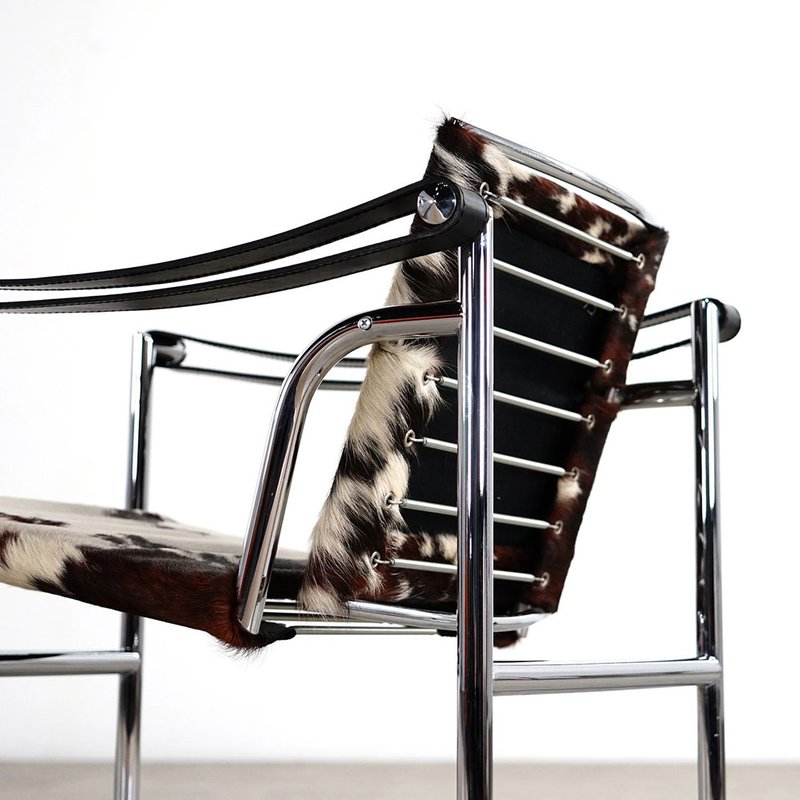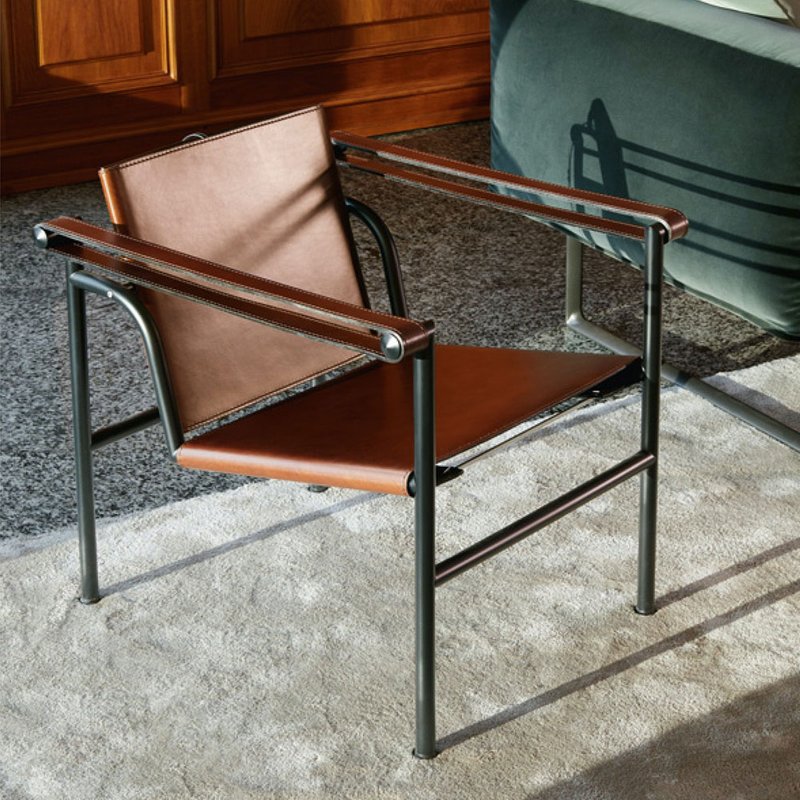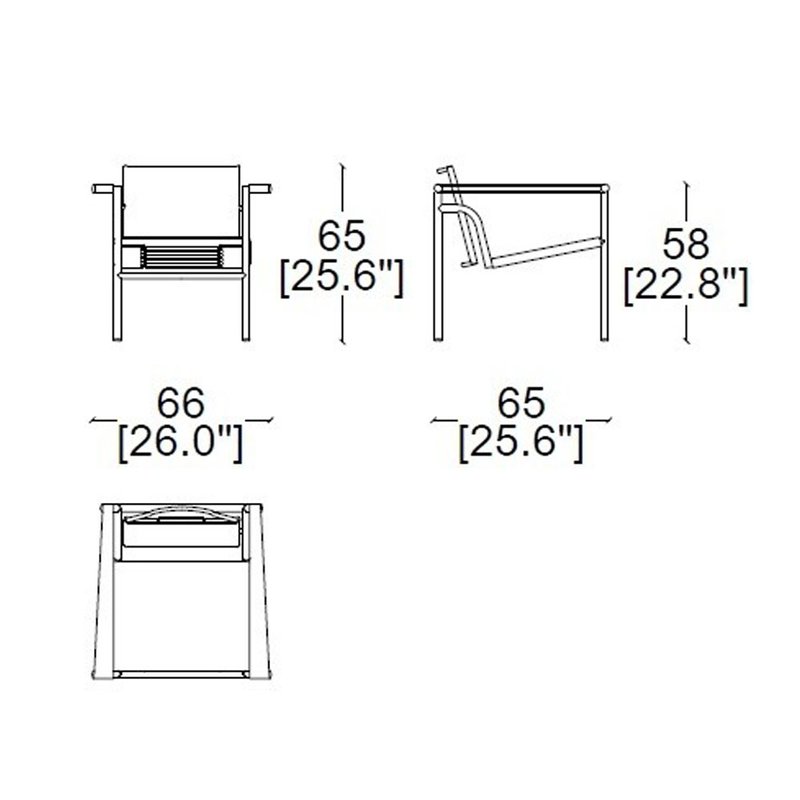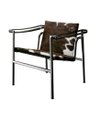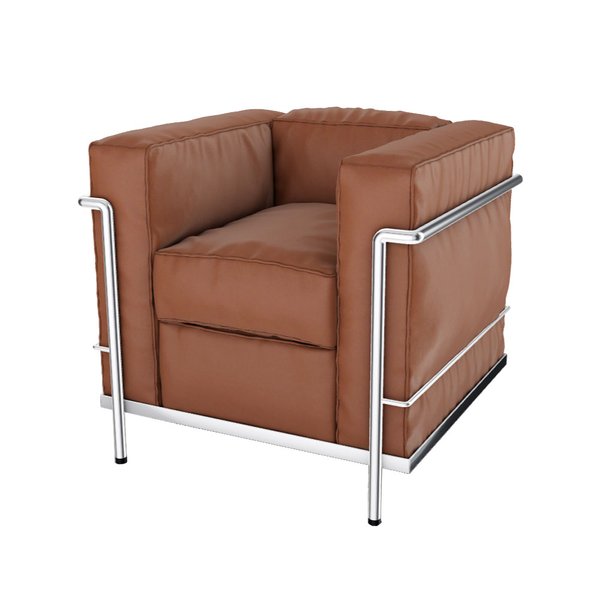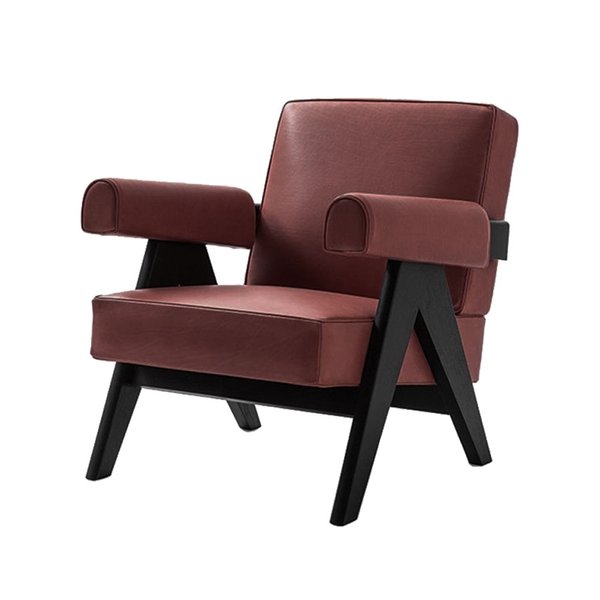1
Fauteuil dossier basculant
Lounge Chair
| Seat | : Cowskin Pezzato Normanno |
| Backrest | : Cowskin Pezzato Normanno |
| Structure | : Polished Chrome |
| Armrest | : Black Saddle Leather |
| Armrest Height | : 590 mm |
| Seat Height | : 390 mm |
| Dimensions | : 650 x 660 x 650 mm |
A light, compact chair designed and presented at the 1929 Salon d’Automne along with other important models, such as the LC2 and LC3 armchairs, the LC6 table and the LC4 chaise-longue. As with all of Le Corbusier’s works, the LC1 derives from an in-depth study of human posture. In this particular case, the chair is intended to be relaxing and to foster conversation. The balance between form and function is achieved through the use of the Modulor, a system based on the typical measurements of the male body and on a mathematical language informed by the proportions of universal harmony. Its perfect compositional simplicity, suited to any context, is available in three versions. In addition to the 1929 model, there is the 1928 Villa Church option, and the one exhibited in 1930 at the Union des Artistes Modernes.
Structure
· Steel rod frame. Finishing polish chromium-plated or lacquered
· Nickel-plated steel springs to fix and fasten the cover.
Quilted upholstery
· Self-supporting fabric with edges in natural leather. Hairyskin. Self-supporting leather.
Foot
· In black finished plastic material.
| Seat | : Cowskin Pezzato Normanno |
| Backrest | : Cowskin Pezzato Normanno |
| Structure | : Polished Chrome |
| Armrest | : Black Saddle Leather |
| Armrest Height | : 590 mm |
| Seat Height | : 390 mm |
| Dimensions | : 650 x 660 x 650 mm |
A light, compact chair designed and presented at the 1929 Salon d’Automne along with other important models, such as the LC2 and LC3 armchairs, the LC6 table and the LC4 chaise-longue. As with all of Le Corbusier’s works, the LC1 derives from an in-depth study of human posture. In this particular case, the chair is intended to be relaxing and to foster conversation. The balance between form and function is achieved through the use of the Modulor, a system based on the typical measurements of the male body and on a mathematical language informed by the proportions of universal harmony. Its perfect compositional simplicity, suited to any context, is available in three versions. In addition to the 1929 model, there is the 1928 Villa Church option, and the one exhibited in 1930 at the Union des Artistes Modernes.
Structure
· Steel rod frame. Finishing polish chromium-plated or lacquered
· Nickel-plated steel springs to fix and fasten the cover.
Quilted upholstery
· Self-supporting fabric with edges in natural leather. Hairyskin. Self-supporting leather.
Foot
· In black finished plastic material.


